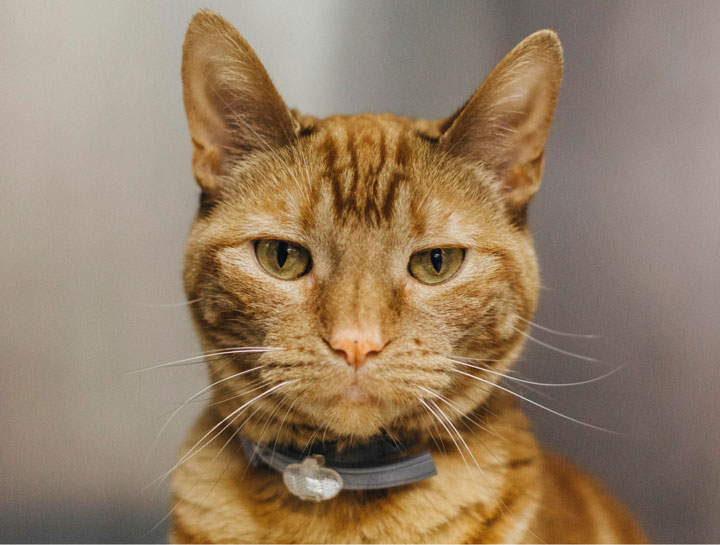Fear Free Feline Transportation

Falmouth Animal Hospital has veterinarians and team members on staff who are Fear Free Certified!
Your pet's veterinary experience begins with the preparation for transport at home, before you even walk through the doors of our practice. Does your cat run away and hide the second he or she sees their carrier? Is it a battle to get them into the carrier? Have you ever had to cancel an appointment because of these problems? Your cat's fear of the carrier stems from their memory of associating this object with their trip to the vet.
How can I help desensitize my pet to his or her cat carrier?
It is important to teach your cat that the carrier is a safe and comfortable space. To start, never hide or put away the carrier, it is best to leave it out at all times preferably in a location where your pet already likes to play and sleep. It is beneficial to encourage your cat to be in the carrier even at home by playing with them around the carrier or taking the top half off to create a cat bed. You can make the carrier more inviting by putting your cat's favorite toys, treats, or even cat nip inside, as well as to provide some soft bedding for comfort like a towel or non-slip mat. Even an article of your clothing can be added to the carrier because your scent can be soothing to your pet. Pheromone products can be wiped or sprayed in the carrier to create a calming environment of familiarity and security.
How should I select a cat carrier?
Carrier selection is also crucial to promote a positive transport experience. Ideally, you should choose a sturdy carrier over a soft one as it provides better support to your cat. Carriers with both front and top openings are preferred, or one with a readily removable top to allow our team to easily access your cat, or even keep them in the carrier when possible for the exam. When placing your cat in the carrier, be patient and try not to force him or her as this will increase their stress and anxiety. Instead, try to entice your cat into the carrier with food or familiar smelling and desirable objects. Once your cat is in the carrier, double check to make sure all closures are locked and secured. Now you are ready to bring your cat into the car.
How should I prepare my vehicle for my cat's ride?
Your vehicle's environment should be silent or quiet and avoid startling noises. If you wish to listen to something calming music is appropriate. You should cover the carrier with a towel or blanket to minimize visual stimuli and it will also help to comfort your cat with a sense of warmth. The safest place for your cat in the car is to secure him or her on the floor behind the passenger seat. Your cat can become stressed from the carrier slipping around on the seats or be jolted during sudden stops. The safest means of transportation is to also limit one cat per carrier, as cats kept together redirect their stress onto their companion.
What should I do once I arrive with my cat at Falmouth Animal Hospital?
Once you arrive at the hospital, it is important to carry your pet in its carrier securely. Avoid picking up the carrier by the handle like a suitcase, as it creates too much motion inside the carrier. A better way to the hold carrier is by the base or sides as this will minimize movement and help your cat feel safer. Once you have arrived at the clinic and checked in, try placing your cat carrier on the bench off the floor. Do not let your cat out of the carrier until you are inside of the exam room where he or she is safe to freely walk about the room and become familiar and comfortable with the new environment.
Safe and stress-free transportation sets the stage for a calm and relaxed appointment, and we will continue to use Fear Free practices throughout the rest of your cat's visit to ensure a happy and positive veterinary experience.
Please call us at 508-563-7147 for more information on our Fear Free Vet Visits for Felines.
